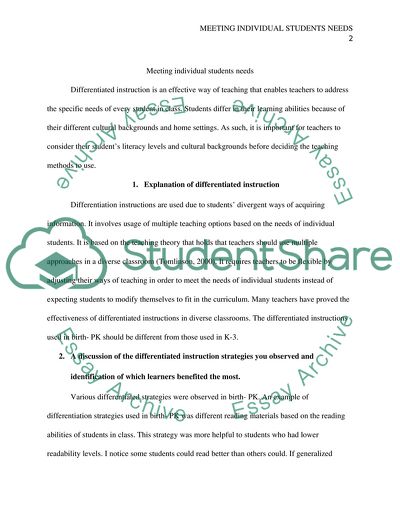Cite this document
(Meeting Individual Student Needs Essay Example | Topics and Well Written Essays - 1250 words, n.d.)
Meeting Individual Student Needs Essay Example | Topics and Well Written Essays - 1250 words. https://studentshare.org/education/1833297-meeting-individual-student-needs
Meeting Individual Student Needs Essay Example | Topics and Well Written Essays - 1250 words. https://studentshare.org/education/1833297-meeting-individual-student-needs
(Meeting Individual Student Needs Essay Example | Topics and Well Written Essays - 1250 Words)
Meeting Individual Student Needs Essay Example | Topics and Well Written Essays - 1250 Words. https://studentshare.org/education/1833297-meeting-individual-student-needs.
Meeting Individual Student Needs Essay Example | Topics and Well Written Essays - 1250 Words. https://studentshare.org/education/1833297-meeting-individual-student-needs.
“Meeting Individual Student Needs Essay Example | Topics and Well Written Essays - 1250 Words”. https://studentshare.org/education/1833297-meeting-individual-student-needs.


